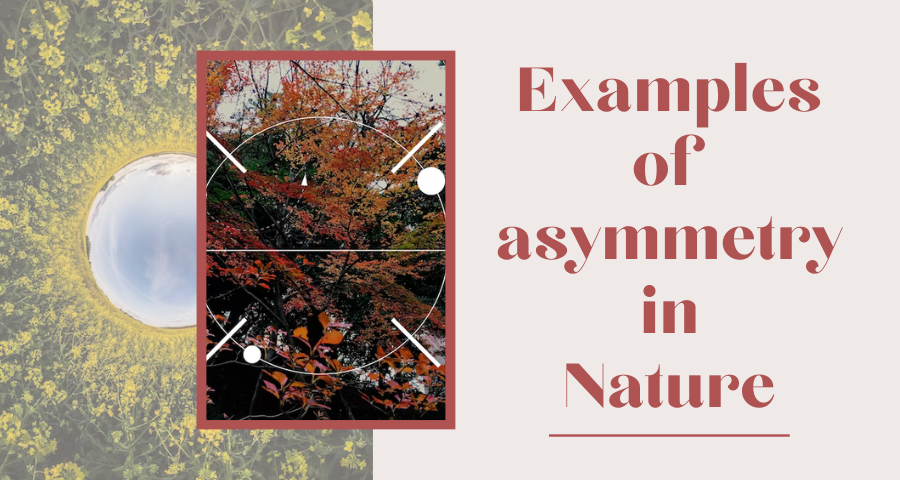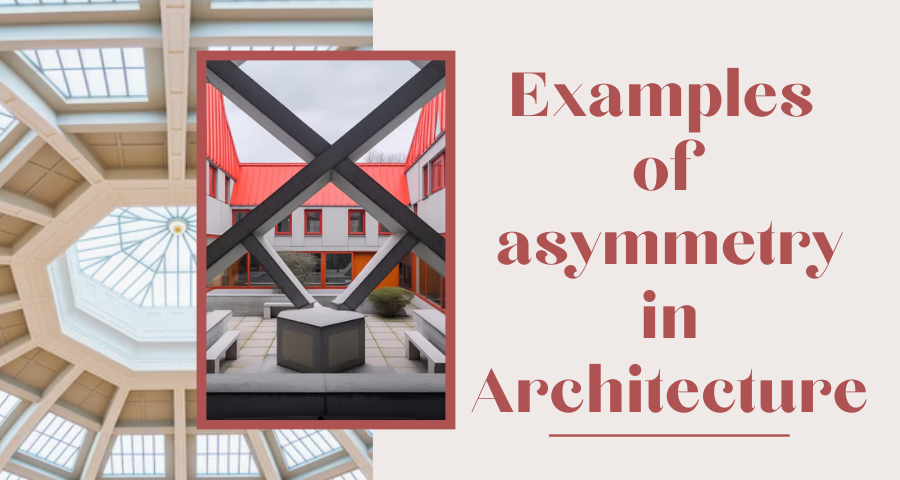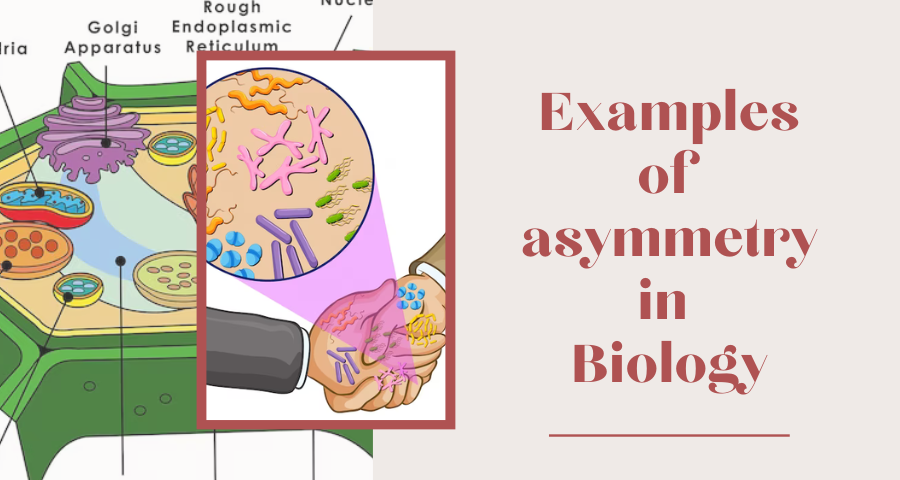Asymmetry is all around us, from the natural world to the man-made creations. Asymmetry, the absence of symmetry, is often considered a flaw in art, nature, and design. Some common examples of asymmetry include Snowflakes, Butterfly Wings, Leaves of a Tree, Heart Placement, and Cloud Computing.
Defining Asymmetry
Asymmetry, at its core, refers to the absence of symmetry or a lack of balanced proportions in a given object, form, or composition. Unlike its counterpart, symmetry, which embodies harmony and uniformity, asymmetry revels in the beauty of imbalance and unpredictability.
In the World of Art and Design
In art, asymmetry challenges the traditional norms of composition. Artists consciously choose to deviate from mirror-like precision, opting instead for irregular shapes, uneven spacing, and unexpected juxtapositions. This deliberate departure from balance injects a sense of vitality and dynamism into the visual narrative.
The Marvels of Nature’s Asymmetry
Nature, the ultimate maestro of design, frequently employs asymmetry to create stunning patterns and forms. From the spirals of seashells to the irregular petals of flowers, asymmetry in nature celebrates the uniqueness of each element, reinforcing the idea that perfection is found in diversity.
Mathematical Intricacies
In mathematics, asymmetry manifests in structures that lack a precise center or axis of symmetry. Geometric shapes with uneven sides and non-uniform patterns fall under the umbrella of asymmetrical forms. Mathematicians and physicists explore these irregularities, unlocking new dimensions of understanding in the process.
The Allure of Imperfection
What sets asymmetry apart is its ability to captivate and inspire. It challenges the status quo, inviting us to appreciate the irregular, the off-kilter, and the unbalanced. Whether in the strokes of a painting, the curves of architecture, or the arrangements of natural elements, asymmetry beckons us to embrace the beauty inherent in imperfection.
Asymmetry in Everyday Life
Asymmetry extends its influence into the minutiae of our daily lives. From the mismatched elegance of fashion to the playful chaos of street art, asymmetry adds a touch of unpredictability that keeps life exciting. Even in the realm of personal style, asymmetrical haircuts, and unconventional accessories showcase a willingness to break free from conformity.
Examples of Asymmetry in Nature

1. Leaves of a Tree
Imagine a tree with leaves of varying sizes and shapes. Each leaf is a unique masterpiece, contributing to the overall beauty of the tree. This asymmetry in leaves not only adds charm but also helps the tree capture sunlight more effectively.
2. Butterfly Wings
Butterflies, those enchanting creatures, exhibit perfect asymmetry in their wing patterns. One wing is never the mirror image of the other, yet they flutter gracefully through the air.
3. Snowflakes
No two snowflakes are identical, showcasing the stunning asymmetry of nature’s frozen wonders. Each snowflake’s intricate design is a testament to the artistry of asymmetry.
4. Human Faces
Even the most beautiful human faces have subtle differences in the eyes, nostrils, and smile. It’s these slight imperfections that make each face unique and interesting.
Examples of Asymmetry in Architecture

5. The Leaning Tower of Pisa
The iconic Leaning Tower of Pisa is a striking example of architectural asymmetry. Its famous tilt was unintentional but has made it an architectural marvel.
6. Guggenheim Museum
Designed by Frank Lloyd Wright, the Guggenheim Museum in New York is renowned for its spiral design. Its asymmetrical structure challenges traditional architectural norms.
7. Sydney Opera House
The Sydney Opera House’s distinctive shell-like structures create an asymmetrical yet captivating silhouette along the harbor. Its uniqueness has made it a symbol of Australia.
8. The Shard
London’s Shard is Europe’s tallest skyscraper, with its irregular glass façade. Its asymmetrical design stands out amidst the city’s skyline.
Examples of Asymmetry in Artistic Expressions

9. Picasso’s Cubism
Pablo Picasso’s Cubist artworks, like “Les Demoiselles d’Avignon,” break free from traditional symmetry. They embrace a chaotic yet thought-provoking form of asymmetry.
10. Jackson Pollock’s Drip Paintings
Jackson Pollock’s drip paintings are a whirlwind of asymmetry. The randomness of splattered paint creates mesmerizing patterns that evoke emotion and intrigue.
11. The Parthenon
Ancient Greek architecture, epitomized by the Parthenon, boasts a symphony of asymmetrical columns and details. Its beauty lies in the deliberate imperfections.
Examples of Asymmetry in Everyday Life

12. The Human Heart
The human heart, with its asymmetrical chambers and valves, is a remarkable example of nature’s design. Its irregularity ensures the efficient flow of blood.
13. Your Fingerprint
Your fingerprint is your unique identifier, and its asymmetry is the reason no two fingerprints are alike. It’s a testament to nature’s precision.
14. Antique Furniture
Antique furniture often showcases asymmetrical designs, with different patterns and shapes on each side. This imperfection adds character and charm.
15. Hiking Trails
Hiking trails in the wilderness are rarely perfectly straight or even. Their asymmetrical paths lead adventurers through diverse landscapes and terrains.
Examples of Asymmetry in Modern Technology

16. Smartphones
The design of modern smartphones embraces asymmetry with uneven bezels, camera placements, and button layouts. This asymmetry enhances functionality and aesthetics.
17. Circuit Boards
Circuit boards are a maze of asymmetrical connections and components inside your devices. This organized chaos powers our digital world.
18. Cloud Computing
Cloud computing relies on asymmetrical distribution of data across servers, ensuring redundancy and reliability in data storage and retrieval.
19. Wind Turbines
Wind turbines have an asymmetrical design with one large rotor and a slender tower. This design maximizes energy capture from varying wind directions.
20. Architectural Software
Architectural software utilizes asymmetrical design elements to create unique and innovative building designs that challenge traditional norms.
Examples of Asymmetry in Biology

21. Human Faces
Human faces are rarely perfectly symmetrical. Most people have subtle differences in the size and shape of facial features such as the eyes, ears, and nostrils. These asymmetries are often imperceptible but add to the uniqueness of an individual’s appearance.
22. Fiddler Crabs
Male fiddler crabs are a classic example of asymmetry in biology. They have one claw that is significantly larger than the other. This enlarged claw is used for attracting mates and communicating with other crabs, making it an essential part of their reproductive behavior.
23. Heart Placement
The human heart is not positioned exactly in the center of the chest. It is slightly inclined to the left side, resulting in a degree of anatomical asymmetry. This natural variation doesn’t affect heart function.
24. Lung Asymmetry
The human lungs are not symmetrical in size. The right lung has three lobes, while the left lung has only two, making it slightly smaller to accommodate the space for the heart.
25. Snail Shells
The shells of many snail species exhibit a spiral pattern that is often asymmetrical. This unique shell structure provides protection to the snail and can vary in shape and size among different species.
- Asymmetry, often viewed as a flaw, is a source of intrigue, diversity, and uniqueness in our world. From the intricate patterns of snowflakes to the complex shapes of seashells, nature’s wonders are full of asymmetrical designs that captivate us with their beauty. Even human creations, such as architecture and art, often incorporate asymmetry to add depth and character to their designs.
- Embracing asymmetry can enrich our lives, making it all the more fascinating. By appreciating the beauty of imperfection, we open ourselves up to a world of possibilities that we may not have otherwise considered. We can learn to see beyond the surface level and appreciate the intricacies and complexities that make things truly unique. Asymmetry adds depth and character to our lives, and by embracing it, we can find new ways to explore and appreciate the world around us.

